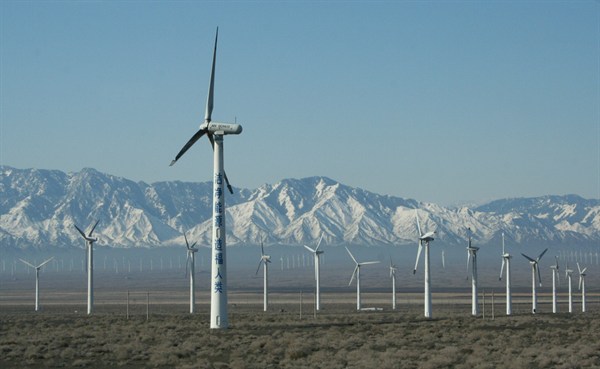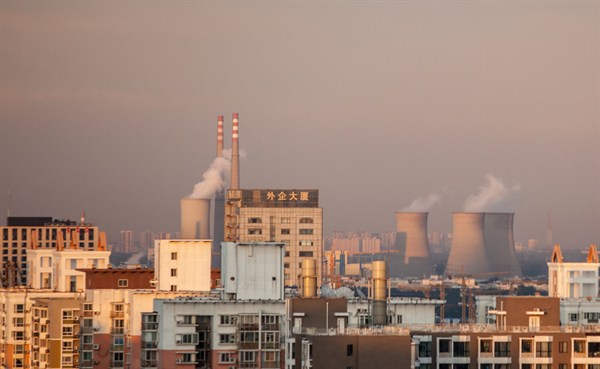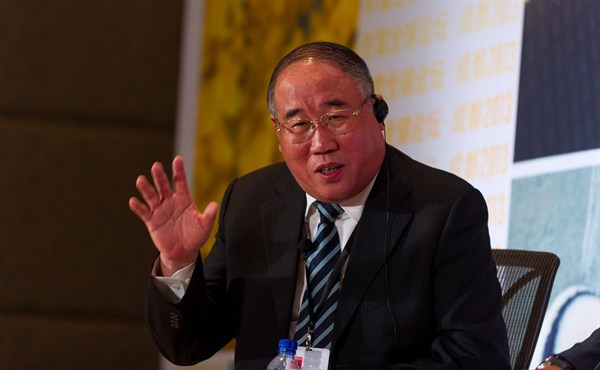Simon Evans
06.06.2014 | 4:00pmThis has been an exciting week for climate policy. First President Obama promised to tackle US coal emissions. Then China said it would limit its overall emissions from 2016.
The world’s two biggest emitters taking bold climate action? Well, you know what they say: if it sounds too good to be true…
We’ve already picked over the reasons why Obama’s plan is politically courageous but lacks climate ambition. And it turns out China is only considering at a cap, not promising to wear it.
So what’s really going on with China’s climate plans? We spoke to some expert China-watchers to find out.
A Chinese cap would be huge
China is now the world’s biggest emitter by miles. In 2012 it emitted around 10 billion tonnes of carbon dioxide, nearly a third of the global 34.5 billion total. Its nearest rival, the US, emitted only half as much.
So a cap on China’s emissions would be huge – in significance as well as tonnes.
It would provide a massive boost to international climate talks where, ultimately, a global cap is needed. And Lord Deben, chairman of the government’s Committee on Climate Change hopes it would kill off the argument that Chinese inaction renders UK or US emissions cuts pointless.
Efficiency efforts redoubled

Yet China has previously strongly resisted an absolute cap on emissions. Instead, it has promised to cut the amount of carbon it emits per unit of income by 40-45% of 2005 levels in 2020. It has set interim goals towards this target as part of its national five year plans.
China only just met the goal under its eleventh five year plan spanning 2006 to 2010, says Sam Geall, executive editor of the journal China Dialogue and a researcher at the University of Sussex.
It was met through a last minute push that led to some unorthodox methods being used to meet the goal, Geall says, such as local officials turning off traffic lights. He thinks China may not be able to meet its emissions intensity target for the twelfth five year plan to 2015.

CC2.0 Trey Ratcliff
The challenge is that national targets are not always respected at local level. Geall says local implementation of environmental policy – or the lack of it – poses a chronic problem.
Shane Tomlinson, senior research fellow for thinktank Chatham House is more optimistic and thinks top-level political commitment has started to tell. He says:
“Our understanding is that efforts have been redoubled and China is now broadly back on track to meet its current carbon intensity target. China has quite a good track record of meeting five year plan commitments.”
Renewables champion
Another area for optimism is renewable energy says Changhua Wu, China director for global not-for-profit the Climate Group. She says:
“Domestically there are many exciting trends going on in line with low-carbon development. This has become an economy wide effort, not just in a single sector?¦ that’s very encouraging.”
Geall backs up this assessment:
“There has been huge investment in renewables and various types of low carbon technology. There’s a big push to move China up the value chain from being basically the dirty workshop of the world to being a hub of innovation. Environmental technologies like solar seem to be a big part of that.”

CC2.0 Kaj17
International Energy Agency chief economist Fatih Birol told journalists last week that China will be the “champion” of renewables over the next 20 years. Its domestic investments on installing low-carbon energy sources will outstrip the US, EU and Japan put together, he said.
The coal problem
Despite all its green ambitions, China is expected to account for 60 per cent of growth in coal demand over the next five years. So China’s air pollution problems – caused in large part burning that coal to produce electricity – are proving central to its climate policy.

CC2.0 Jens Schott Knudsen
71 of 74 major cities flunked air quality standards last year according to China’s official 2013 environmental assessment, China Daily reported yesterday. This is having big political repercussions, Tomlinson says:
“Air pollution is something that’s really gone up the political agenda and is now a serious concern for the middle class. It has been recognised at party level that they can’t continue on their current trajectory.”
Wu says leaders have come up with the concept of “ecological civilisation” that recognises planetary boundaries that should not be crossed. This will have a big impact on emissions too, she says.
Meanwhile serious efforts to tackle air pollution from coal mean China might already be doing more to tackle climate change than the US or EU, according to one Greenpeace analysis.
Some government officials are even starting to talk about a peak in China’s coal use by the end of the decade, says Tomlinson. The idea that China’s coal use could peak is gaining ground – though others strongly disagree.
Carbon markets with Chinese characteristics
China is making progress in carbon markets too. Chongqing is set to open China’s seventh city-level emissions cap-and-trade scheme within days and is now the second biggest carbon market after the EU.

CC2.0 Clément Belleudy
This has been a huge learning process, says Wu. Trading so far has been fairly insignificant but institutional capacity and confidence that the idea can be made to work has been strengthened, she says.
Says Wu:
“Now the debate is what next. Some want a national cap-and-trade scheme. Another possibility would be to have an interim step first, extending the city schemes up to regional level.”
Either way a national scheme is on the horizon, she says. Some are confidently predicting one could be in place by 2018. But with China it is always hard to tell.
Does the cap fit?
A national cap-and-trade scheme would be an obvious route into a Chinese emissions cap. This all brings us back to the question of whether China will commit to one.
Li Shuo, climate and energy campaigner for Greenpeace China has written that it would be a natural extension of existing policy. Tomlinson also talks up the prospects. He says the US and Chinese news this week was “clearly a managed sequence of announcements”.
Reports of China putting a cap on emissions originated from the well-connected He Jiankun, chairman of China’s Advisory Committee on Climate Change. That suggests a cap is definitely on the table for the next five year plan, Tomlinson says. “We definitely think the cap is quite likely.”
The next plan will be under discussion right now, Geall explains:
“This is the moment when the policies and targets that will go into the next five year plan are being discussed in elite circles.”
But Wu points out that there are different departments within China’s National Development and Reform Commission, the body responsible for drawing up five year plans. Not all of them will be in favour of a national emissions trading scheme, let alone an emissions cap, she says.
Hongliang Chai, analyst at Thomson Reuters Point Carbon does not expect any official details to emerge on the next five year plan until early 2016, shortly before it is voted on by China’s National People’s Congress.
Chai says:
“He Jiankun is one of the government’s top climate policy advisers and I agree a cap is under discussion, but I won’t judge his comments as an official signal from the government.”
A cap is not the same as a cut
Chai adds that it is one thing to have a cap and quite another to reduce emissions. A cap need not imply Chinese emissions stop going up.
David Joffe, head of modelling for the Committee on Climate Change says:
“In order to prevent global average temperatures rising more than 2 degrees, global emissions will need to peak as soon as possible with deep cuts thereafter so that emissions in 2050 are around half of those today. It is conceivable that this could happen with a 2025 peak, but delaying until 2030 is certainly pushing it if we are to achieve this 2050 target.”
China’s peak year for emissions is central to this, with estimates ranging from the 2020s to 2030 and beyond. Senior Chinese climate negotiator Xie Zhenhua said “we will try our utmost to peak as early as possible,” speaking to reporters at UN climate talks in Bonn yesterday.

CC2.0 Fortune Live Media
Wu says:
“I don’t think anyone can say at this point when China will peak… Ultimately the government has to take a decision but it is not purely an academic exercise. They have to bring everyone with them – not just local government but the industrial sector too.”
So will Chinese negotiators be coming to the Paris climate talks next year ready to pre-empt domestic agreement on the next five year plan with a promise of a national cap on emissions? Wu doesn’t think so:
“Realistically I doubt it very much. China is already making huge efforts. If you look at the US plan announced this week, it is encouraging to see but is it enough? Should you regard it as very aggressive or very ambitious? Probably most people wouldn’t really say so.
“Looking at the EU, yes it has been leading? But would you say [its yet to be finalised plan to cut emissions] 40 per cent by 2030 is ambitious? Most do not regard that as ambitious either.”
She adds that Australia is already out of the picture and that Japan is unlikely to bring more ambition to Paris either. All in all Wu says there won’t be enough pressure to make Chinese leaders shift dramatically from what they are doing already.
It seems like both China and the US have climate plans that are ambitious in many ways, be they political or economic. But when it comes to avoiding dangerous climate change they still fall short.

